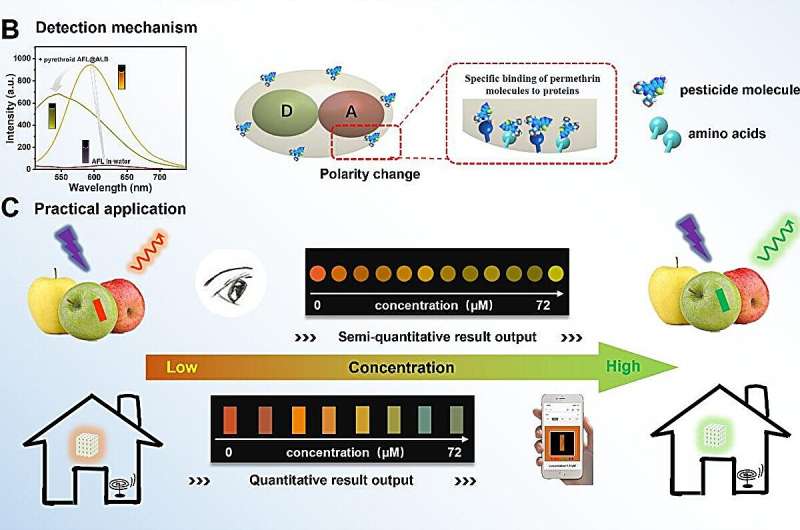In an innovative leap for food safety, researchers from the Hefei Institutes of Physical Science at the Chinese Academy of Sciences have unveiled a fluorescent probe capable of detecting harmful pesticide residues in mere seconds. This development, spearheaded by Prof. Jiang Changlong, promises a rapid, visible detection method for pyrethroid insecticides, with findings published in the journal Analytical Chemistry.
Pyrethroids, while effective in pest control, pose significant health risks when overexposed, including dizziness and respiratory issues. Traditional detection methods rely heavily on laboratory equipment and lengthy procedures, but this new probe offers a swift and user-friendly alternative. “We created a new fluorescent probe that lights up in different colors when it comes into contact with pyrethroids,” explained Liu Anqi, a key member of the research team. “It’s a widely used type of insecticide found in many household and agricultural products.”
How the Fluorescent Probe Works
The probe’s design integrates a special fluorescent dye with a common protein, forming a molecular complex that emits a yellow glow under ultraviolet light. Upon contact with pyrethroid molecules, the fluorescence shifts to green, a change that is easily visible to the naked eye within 10 seconds. This rapid visual cue allows for immediate detection without the need for sophisticated equipment.
Tests have demonstrated the probe’s high sensitivity across a broad range of pyrethroid concentrations. For practical applications, the researchers have also developed a portable system that enables users to photograph the glowing sample with a smartphone. Through image color analysis, pesticide levels can be estimated, facilitating rapid field testing in various settings such as kitchens, markets, and agricultural environments.
Innovations in Gas-Phase Detection
In a bid to tackle pesticide vapors, such as those emitted by mosquito coils, the research team has further embedded the fluorescent probe into a lightweight, sponge-like aerogel material. This aerogel effectively traps airborne pesticides, exhibiting a visible color change from orange to green. It represents one of the first tools designed for gas-phase pesticide detection, marking a significant advancement in environmental monitoring.
“This breakthrough opens new doors for fast, accessible pesticide monitoring, helping improve food safety and reduce health risks,” noted the research team.
Implications for Food Safety and Public Health
The introduction of this fluorescent probe could have far-reaching implications for food safety and public health. By providing a quick and reliable method for detecting pesticide residues, it empowers consumers, farmers, and regulators to ensure safer food products. The ability to conduct on-the-spot testing without specialized training or equipment democratizes access to crucial safety information.
Moreover, this development aligns with global efforts to reduce pesticide exposure and its associated health risks. As regulatory bodies worldwide tighten controls on pesticide use, tools like this probe could play a pivotal role in compliance and enforcement.
Looking Ahead
As the research team continues to refine the probe and explore its applications, the potential for broader adoption grows. Future developments may include expanding the probe’s capabilities to detect other types of pesticides or harmful chemicals, further enhancing its utility in diverse settings.
The publication of this study in Analytical Chemistry underscores the scientific community’s recognition of the probe’s significance. With ongoing advancements and potential collaborations, this breakthrough stands to transform how we monitor and manage pesticide residues, ultimately contributing to a safer and healthier world.
For more detailed information, refer to the study by Anqi Liu et al., titled “Supramolecular Fluorescence Probe for Rapid Visual Detection of Pyrethroid and Composite Aerogel as a Pyrethroid Vapor Sensor,” published in Analytical Chemistry (2025).
